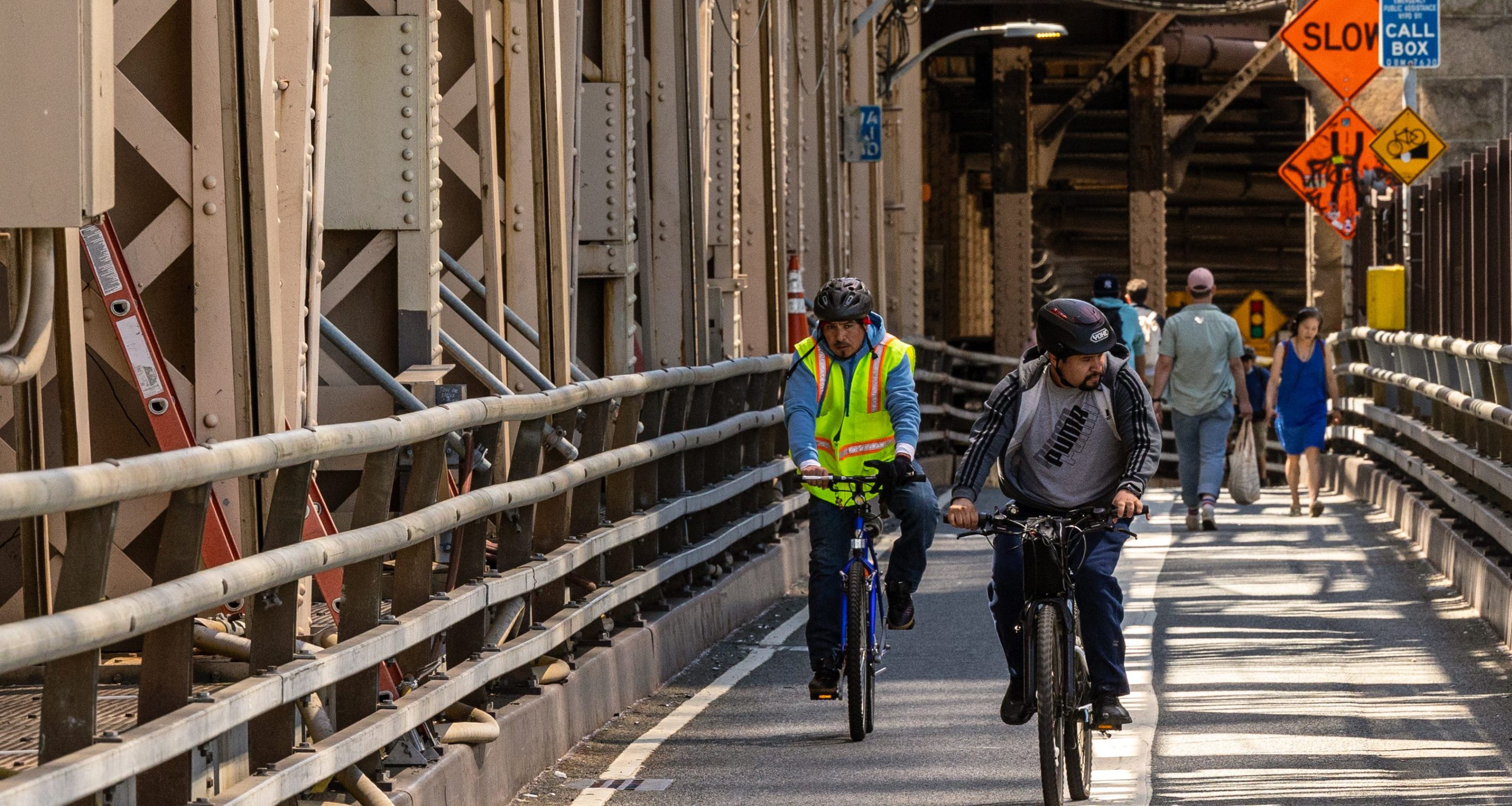Dozens of people have been injured in crashes on the narrow two-way bike and pedestrian path of the Queensboro Bridge — yet officials have repeatedly delayed a project to create more space for the sustainable modes in order to appease motorists.
There have been at least 23 crashes injuring 25 people on the shared path on the bridge’s northern outer roadway since the beginning of 2021 when then-Mayor Bill de Blasio promised to give pedestrians their own lane on the south shoulder of the span — and collision reports obtained via Freedom of Information Law indicate that riders often hit each other due to a lack of space.
“Just what you’d expect from a [two-way bike and pedestrian] path that narrows to nine feet,” said longtime Queens bike advocate Steven Bodzin in response to a review of the city data. “It’s obviously just absurdly narrow for a heavily trafficked two-way path.”
In response to a nearly seven-month-old Streetsblog FOIL request, the DOT on Tuesday finally disclosed details of 13 of the crashes.
The list DOT provided [PDF] is incomplete, because there are 10 more reported crashes during the same timespan in the city's crash reports on Open Data. Streetsblog also found three crashes with injuries posted on social media that were not on DOT's list, including collisions in mid-October 2021, June 15, 2022, and on Aug. 20, 2022.
Bike the Queensboro Bridge path!! How anyone rational can look at the way pedestrians are forced to share a narrow, crowded path with cyclists and think “yeah, okay, looks good to me, boss!” is beyond comprehension. Open the SOR!!!! #MoreSpaceQBB https://t.co/ilEeWuE3SV pic.twitter.com/MuymmlVc4G
— Boba Cyclist 정 (@BobaCyclist) November 10, 2023
But the 13 reports for the first time give a clearer picture of the cause of many crashes: In at least seven cases, people collided head-on or while trying to pass each other. Other reports don’t specify which way cyclists were going or were of single-person crashes.
For example, two cyclists smashed into each other on March 21, 2021, leaving one of them with a lacerated and broken nose. In another crash about a year later, two cyclists collided head-on — with each blaming the other for swerving into their lane. In August 2022, a cyclist trying to overtake another rider crashed into oncoming traffic, injuring her right leg, right arm, and her ribs.
“That confirms what we’ve been saying: the path is too narrow for bi-directional, shared use between cyclists and pedestrians,” said Laura Shepard, a Queens-based organizer with Transportation Alternatives. “The bike side alone is not even wide enough for two cyclists to pass each other safely.”
Other reports in the 13 incidents lack key details or are unusual, such as one cyclist who simply “lost control of his bicycle and fell off,” per a witness, and an electric scooter rider who fell after hitting a cable hanging from scaffolding.
De Blasio promised to close the south outer roadway to cars and open it to pedestrians by the end of 2022 — mirroring the setup on the Manhattan Bridge — but the DOT under the Adams administration has repeatedly stalled the revamp until this summer, blaming an ongoing rehabilitation of the 114-year-old bridge's upper deck.
Agency leaders have insisted on maintaining the south outer roadway for car travel to keep at least seven of the span's nine motorists lanes open during the construction, despite admitting that closing the second shoulder would only increase the number of cars queuing by up to 5 percent, which they labeled as “major traffic delays.”
At the same time, there has been a consistent bike boom on the bridge — the only direct connector between Manhattan and Queens — with DOT logging an all-time high ridership of 1.98 million bike crossings in 2023.
More bridge 🚲 data!
— Bike New York (@bikenewyork) January 12, 2024
The Queensboro Bridge saw an all-time high 1.98 million bike crossings in 2023
(All on a 2-way bike path rated at 6 feet wide)
9 monthly totals also set new records.
Now about #morespaceQBB @NYC_DOT .. Is this the year?? https://t.co/aJpcHCQNPd pic.twitter.com/iK7GwpwMXi
“It’s appalling that the convenience of drivers is prioritized over the lives and limbs of cyclists and pedestrians,” Shepard said.
DOT declined to comment or explain the discrepancy between the two sets of its crash data cited in this story.






